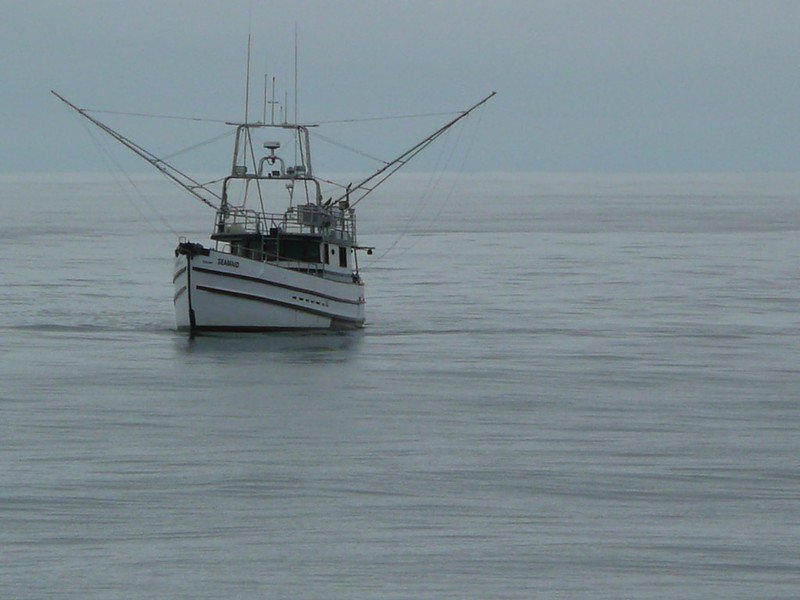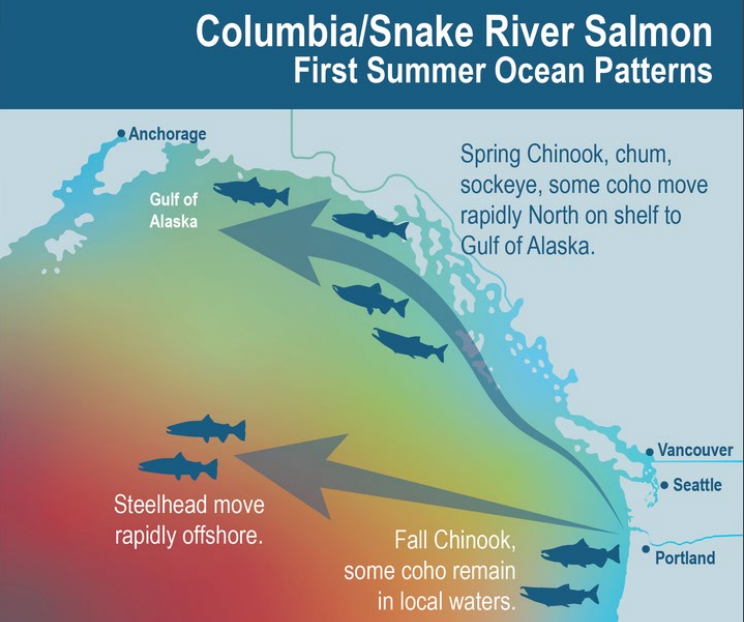Multiple Jurisdictions Cooperate to Manage Salmon Harvest in the Pacific Ocean and Columbia River
- January 18, 2024
- Carol Winkel

At its December meeting, the Council heard from federal, state, and tribal representatives about their coordinated efforts to manage salmon harvest in the ocean and rivers. Representatives included Ed Farley, program manager at the Alaska Fisheries Science Center; Tony Siniscal, fisheries biologist, NOAA Fisheries Sustainable Fisheries Division; Kyle Adicks, intergovernmental salmon manager, Washington Department of Fish and Wildlife; and Mike Matylewich, fisheries management director, Columbia River Inter-Tribal Fish Commission.
During a presentation last summer, questions arose about the ocean harvest of Columbia River salmon and steelhead. In response to the interest it generated, Council members asked for an overview of the issue.
“We don’t have authority in the harvest arena,” noted Fish and Wildlife Director Patty O’Toole, “but the Council’s fish and wildlife program supports hatcheries in the basin for conservation and harvest, so understanding the processes of these agencies is important.”
The management of Columbia River salmonid stocks and their harvest is a highly regulated and collaborative effort carried out by multiple entities on an ongoing basis. Panelists covered where Columbia River salmon go in the ocean, their ocean experience, and the agreements on conservation responsibility, annual harvest, and related decisions or actions. Panelists emphasized the close regional, national, and international cooperation employed to address the multiple legal and cultural expectations related to salmon harvest. They described how they manage the fisheries using stock abundance information. This allows for harvest opportunities when salmon stocks are healthy, and yet still provide protection for weak stocks.

“This is a very complex system and we’re putting a tremendous amount of effort in understanding the science, implementing policies, and enforcing regulations,” said Matylewich. “It’s been said that the Pacific salmon fishery is one of the most highly regulated fisheries in the world.”
“It’s a function of their migration pattern; they go to multiple jurisdictions, so it requires a lot of coordination, a lot of information. In my experience over the last 40 years of doing this, with advances in techniques and understanding as new information becomes available, I think we’ve done a good job,” he said. One example of this has been the ability to determine where salmon are located to stop high seas drift-net fishing.
“Through all these management forums, there’s a concerted effort to be responsive to changes in the production and productivity of the stocks that we’re targeting. I would have a lot of confidence that what we’re doing is consistent with protecting and conserving these stocks while giving people the opportunity to harvest the healthier stocks,” said Matylewich.
He noted two success stories: Snake River fall Chinook and Hanford Reach fall Chinook.
“The perception is that harvest is the wild, wild West, and people don’t know about these efforts,” said Council Chair Jeff Allen.
“I think the success stories probably merit a presentation of its own so that the region can understand what’s been done.”



